Think of your best friend who keeps things to himself - a characteristic that would sometimes make it strenuous for you to understand if he is in distress. Juxtapose such a character with another friend who is an open book which makes it a downhill task to know what he is thinking and feeling. Such a correlation can be observed in this digital world where the security of open source software and proprietary software is constantly debated.

Dr. A.P.J Abdul Kalam, former President and renowned scientist of India, once reiterated that “open source codes can easily introduce the users to build security algorithms in the system without the dependence of proprietary platforms”. The security that open source software offers is unparalleled. Drupal, as an open source content management framework, is known for its provision of magnificent security for your online presence and is worth considering.
Getting to know open source software
It was in 1999 when Eric Raymond stipulated that more eyeballs can make the bugs look shallow. He coined the term “Linus’ Law” which was named in honour of Linux creator Linus Torvalds. Since then, it has been almost two decades for continuous usage of Linus’ Law as a doctrine by some to explain the security benefits of open source software.
Given a large enough beta-tester and co-developer base, almost every problem will be characterized quickly and the fix obvious to someone - The Cathedral and the Bazaar by Eric S. Raymond (Lesson 8)
Open source software consists of source code that is openly available for anyone to do inspection, adjustments or improvements. This code may comprise of bugs or issues that require to be flagged.
Furthermore, public availability means attackers could study and exploit the code that emphasises on inculcating code level security practices. Some of the common open source security practices constitute:
- Governing an inventory of all software used. This data must consist of the version, hash value and the original source of the code.
- Verification of the availability of security updates and bug fixes. This makes sure that the patch management processes are being done regularly.
- Testing and scanning the source code. This is performed using code analysers, auditing tools, or a community like Drupal.
- Make sure that open source applications are in compliance with the existing network architecture to avoid violations of any firewall or security policies.
Myth or fact: Is Open source software more secure than closed source software?
Whether it is the Heartbleed incident in 2014, where the vulnerability was discovered in OpenSSL. Or, the Microsoft Vulnerability Exploit in 2014, when credit card information of millions of Home Depot customers was compromised. Both open source and closed source software have a history of encountering security threats. But which one is more secure?
Closed-source software, also known as proprietary software, is only distributed to authorized users with private modification and republishing restrictions. On the flip side, OSS is distributed under a licensing agreement which makes it available for the general public to use and modify for no cost.
It is this ability to modify the code that forms the crux of the argument within the Linux community that open source is more safer and less susceptible to security attacks in comparison to closed source software Microsoft Windows.
OSS allows anyone to rectify the broken code. In contrast, closed source can only be fixed by the vendor.
So, when more people are testing and fixing the code within the OSS community, open source gradually increases its salience on security over time. Although attacks are still discovered, it has become a lot easier to identify and fix bugs. Open source enthusiasts believe that they experience fewer exploits and their code receives patches more rapidly as there are a plethora of developers contributing to the project.
When digging deeper, the notion that open source platforms offer users the capability to keeping itself relevant with new and altering requirements underpins the argument for open source over closed. OSS does have a reputation of being more secure as the University of Washington states in a report.
Open source security in Drupal
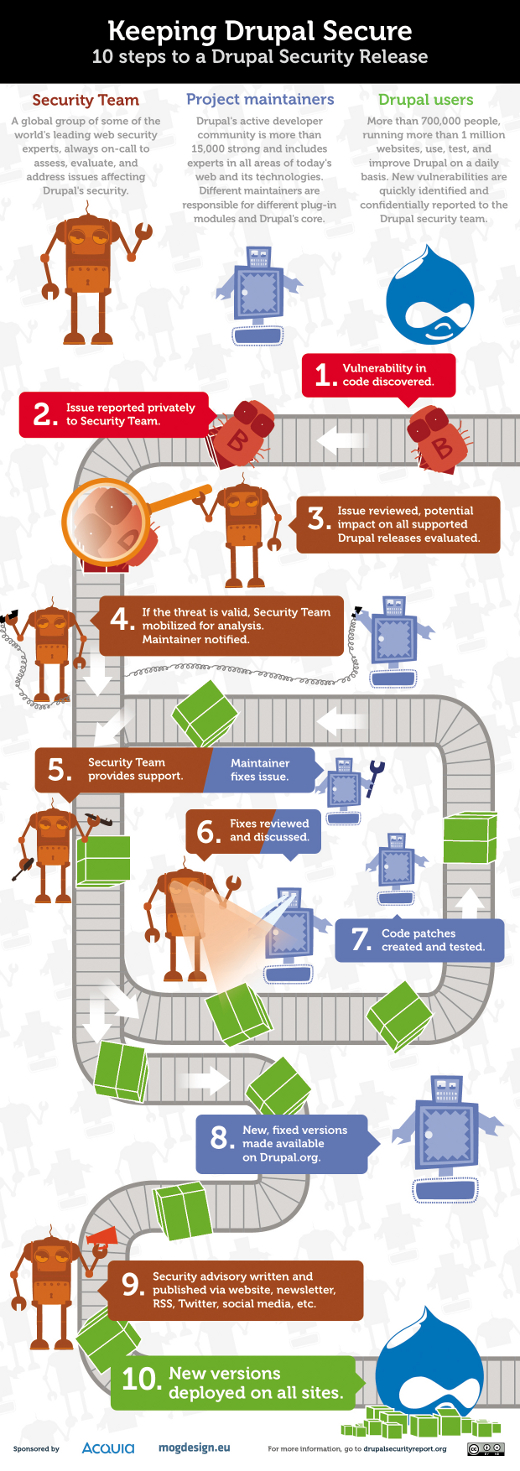
Drupal Security Team in action
The Drupal open source project has a dedicated team of volunteers who track security-related bugs and release updates. They help in:
- Resolving security issues that are reported in a Security Advisory.
- Offering help for contributed module maintainers in fixing security issues.
- Offering documentation for writing secure code and safeguarding Drupal sites
- Providing assistance to the infrastructure team for keeping the Drupal.org infrastructure safe.
Anyone, who discovers or learns about a potential error, weakness or a security threat that can compromise the security of Drupal, can submit it to the Drupal security team.
Process cycle
The process cycle of the Drupal security team involves:
- Analysis of issues and evaluation of potential impact on all the supported releases of Drupal.
- Mobilizing the maintainer for its removal if found with a valid problem
- Creation, assessment, and testing of new versions
- Creation of new releases on Drupal.org
- Using available communication channels to inform users when issues are fixed
- Issuing an advisory if the maintainer does resolve the issues within the deadline and recommending to disable the module thereby marking the project as unsupported on Drupal.org.
The security team keeps issues private until there is a fix available for the issue or if the maintainer is not addressing the issue from time-to-time. Once the threat is addressed and a safer version is available, it is publicly announced.
In addition, the security team coordinates the security announcements in release cycles and works with Drupal core and module maintainers. For any concern with the management of security issues, you can also ask [email protected].
Security features
- You can enable a secure access to your Drupal site as it has the out-of-the-box support for salting and repeatedly hashing account passwords when they are stored in the database.
- It also lets you enforce strong password policies, industry-standard authentication practices, session limits, and single sign-on systems.
- It provides granular access control for giving administrators full control over who gets to see and who gets to modify different parts of a site.
- You can also configure Drupal for firm database encryption in the top-notch security applications.
- Its Form API helps in data validation and prevents XSS, CSRF, and other malicious data entry.
- It limits the login attempts that can be made from a single IP address over a predefined time period. This helps in avoiding brute-force password attacks.
- Its multilayered cache architecture assists in reducing Denial of Service (DoS) attacks and makes it the best CMS for some of the world’s highest traffic websites like NASA, the University of Oxford, Grammys, Pfizer etc.
- Notably, the Drupal addresses all of the top 10 security risks of Open Web Application Security Project (OWASP).
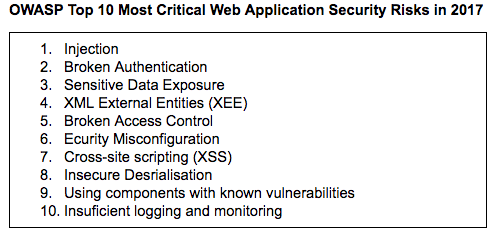
Statistical reports
In the 2017 Cloud Security Report by Alert Logic, among open source frameworks assessed for content management and e-commerce, Drupal was reported for the least number of web application attacks.
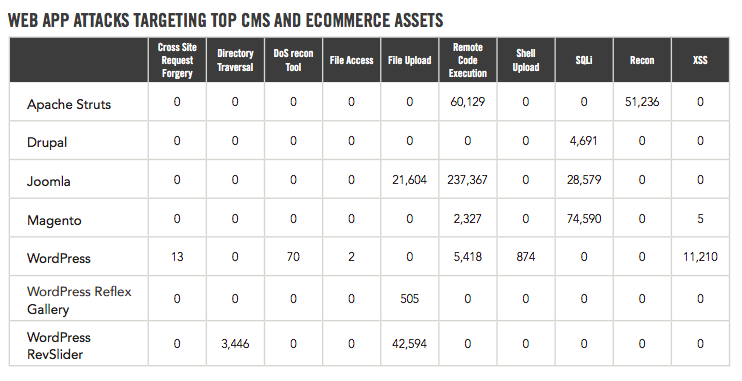
Sucuri’s Hacked Website Report also showed that Drupal was the most security-focused CMS with fewer security vulnerabilities reported. It stood on top against leading open source CMSs like Wordpress, Joomla, and Magento.
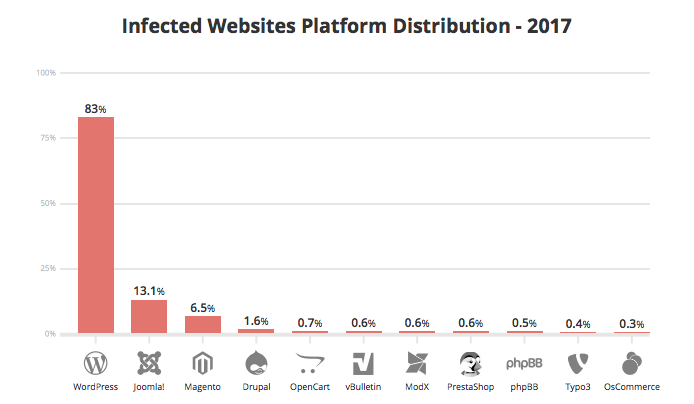
Challenges in open source security
Open source software has its share of challenges as well. Equifax’s 2017 breach was notable because of the millions of US consumers who were affected. For the digital transformation to transpire, developers are moving from perfect to fast using open source components as vital assets for swiftly adding common functionality. For letting developers move as swiftly as customers demand, security pros must address some fundamental challenges.
For the digital transformation to transpire, developers are moving from perfect to fast using open source components as vital assets for swiftly adding common functionality
The time between disclosure and exploit is shrinking. Today, there is enough information in the Common Vulnerability and Exposures (CVE) description of a vulnerability consisting of affected software versions and how to execute an attack. Malicious hackers can make use of this information and decrease the time between disclosure and exploit as was witnessed in the case of Equifax.
Identification of open source component vulnerabilities listed in the National Vulnerability Database (NVD) increased by 10% from 2015 to 2016 with a similar increase in 2017. For instance, in components from Maven packages, Node.js packages, PyPi packages, and RubyGems, published vulnerabilities doubled (see graph below).
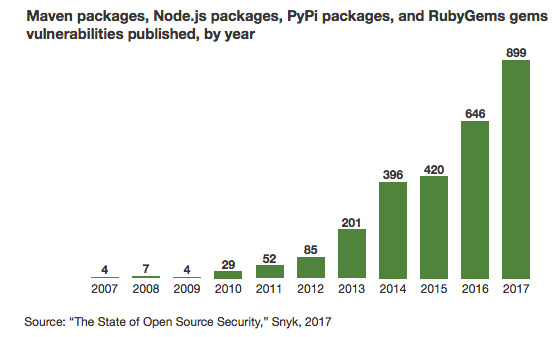
Security pros must assume that prerelease vulnerability scans are not executed by open source developers. So, software composition analysis (SCA) and frequent updates to open source components will be the responsibility of the enterprise.
Conclusion
Open source security does pose a significant case for itself and can be a better option than a closed source or proprietary software. Also, it is a matter of preference looking at the organisational needs and project requirement, to choose between them for your digital business.
Drupal, as an open source content management framework, comes out as the most secure CMS in comparison to leading players in the market. At Opensense Labs, we have been perpetually offering digital transformation with our strong expertise in Drupal development.
Contact us at [email protected] for amazing web development projects and leverage open source security in Drupal 8.
Subscribe
Related Blogs
Inside the Drupal AI Summit: Themes, Speaker and What To Expect

“ The web is changing fast, and AI is rewriting the rules. It writes content, builds pages, and answers questions directly,…
FOST and Drupal AI Initiative: Next Era of Responsible AI

Three years after the launch of generative AI tools marked a new age for artificial intelligence, almost 90% of survey…
Drupal AI Ecosystem Part 5: AI Content Suggestions

Drupal has steadily evolved from being just a content management system into a flexible platform that incorporates emerging…




